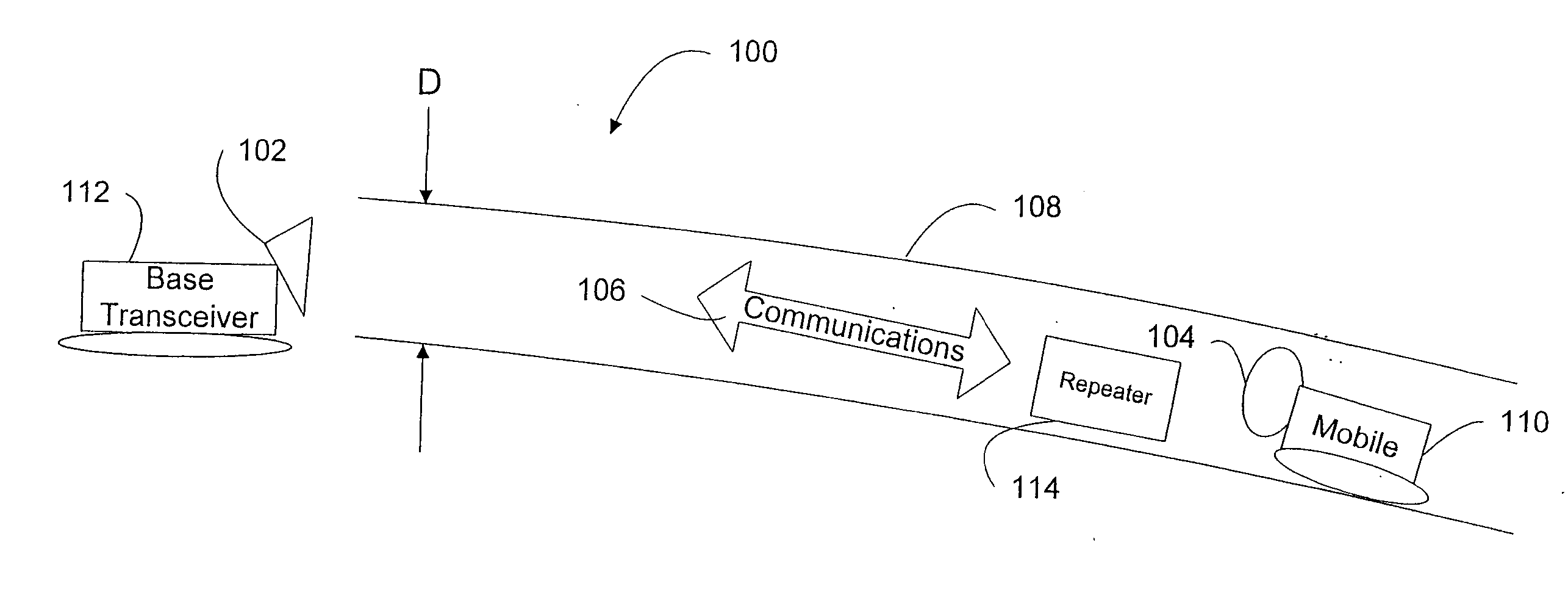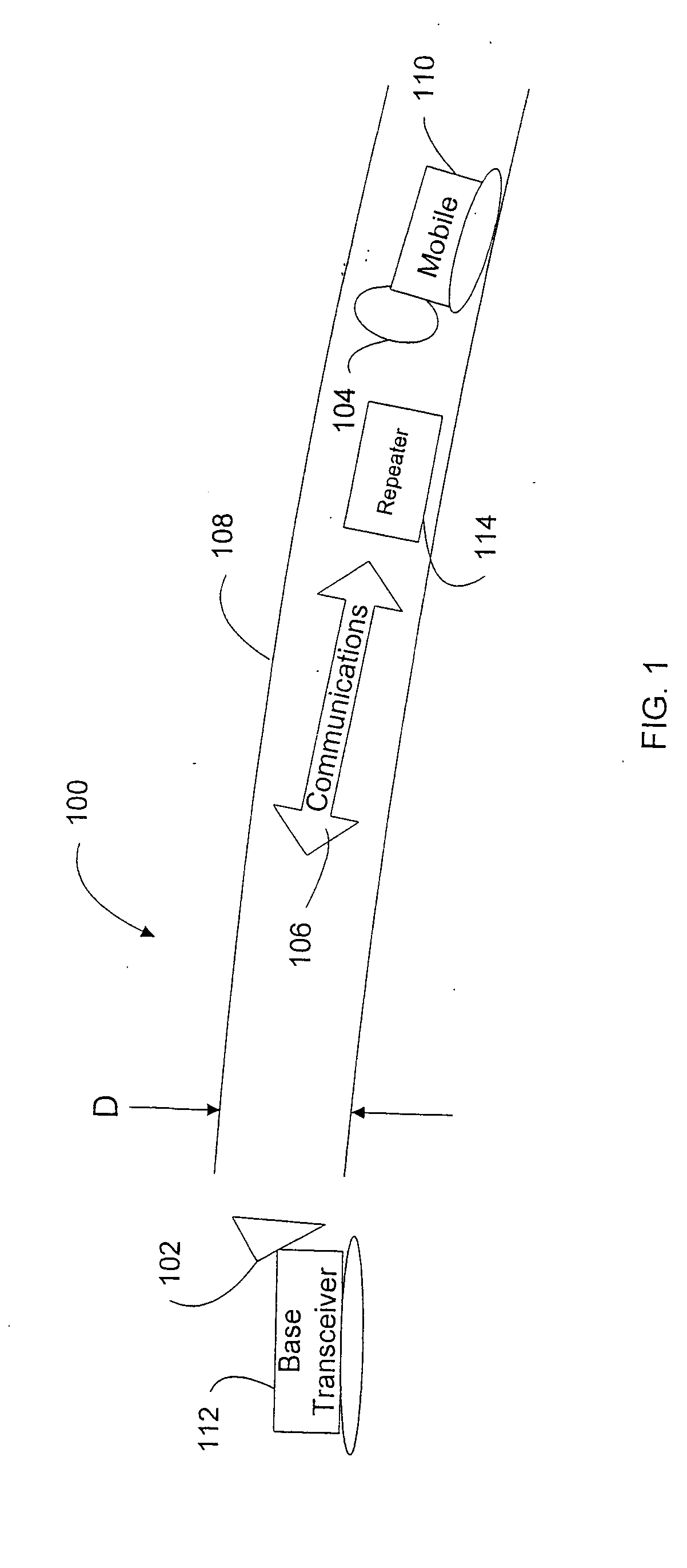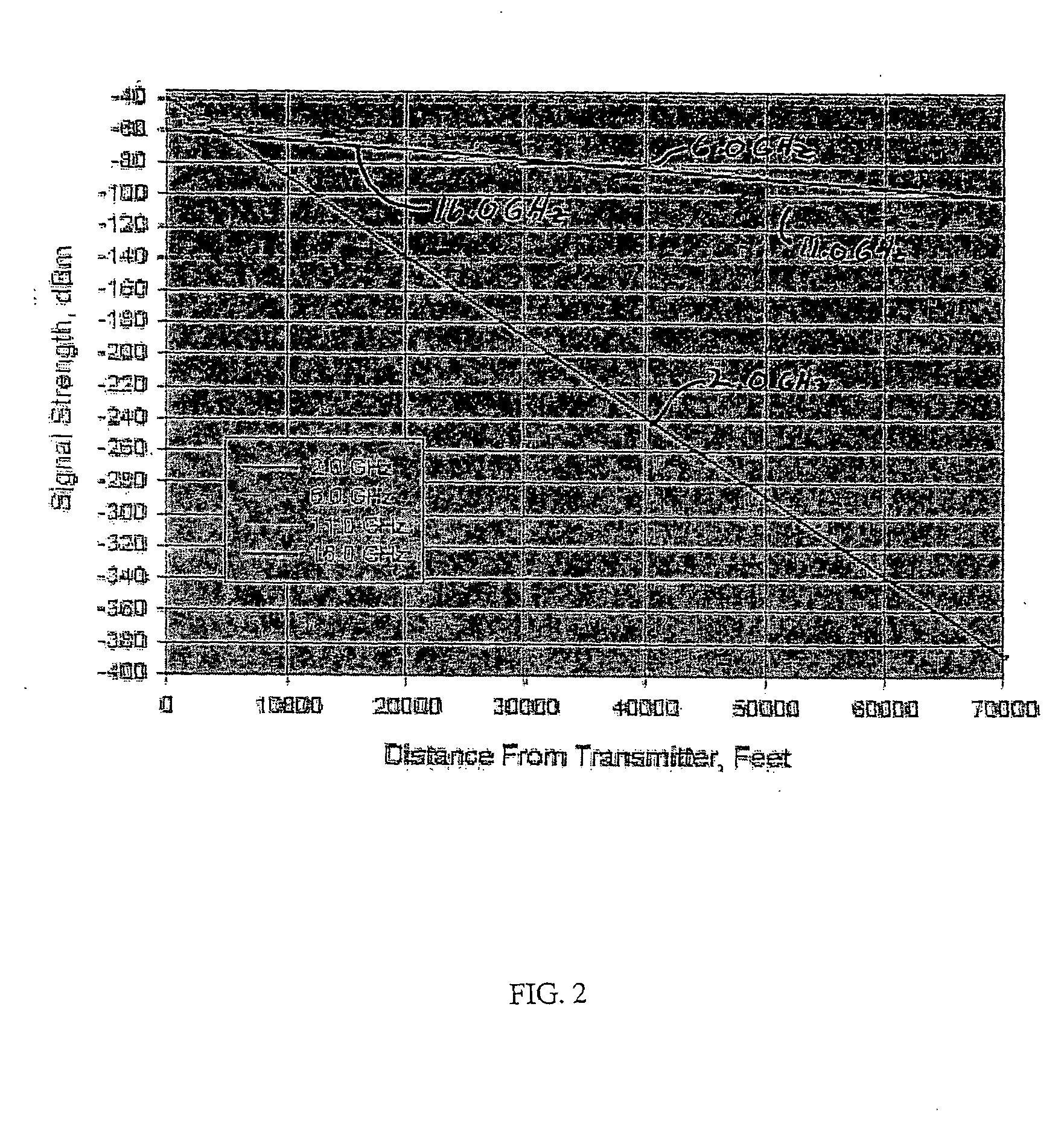Wireless communications system
a communication system and wireless technology, applied in the field of wireless communication, can solve the problems of limited channeling effect, power consumption, and the possibility of each transceiver operating, and achieve the effect of ensuring the level of rf exposure for workers
- Summary
- Abstract
- Description
- Claims
- Application Information
AI Technical Summary
Benefits of technology
Problems solved by technology
Method used
Image
Examples
example 1
Signal Propagation in Azotea Tunnel
The Bureau of Reclamation operates Azotea tunnel, which is a water conveyance tunnel located near Chama, N. Mex. The tunnel is eleven feet in diameter, thirteen miles long, has a straight and uniform geometry, and is concrete lined. The water level in the tunnel was sufficiently lowered to permit access by Bureau personnel. A comparative study of signal propagation distance was performed in this tunnel. The comparative study involved: commercially available radios transmitting at 160 MHz, 400 MHz, and 900 MHz; a lossy feeder system; and a super high frequency transmitter.
Hand-held radios normally used by Bureau personnel transmitting at 160 MHz and five watts of power were found to be useless when separated by about 0.2 miles or roughly 1000 feet in Aztoea tunnel. Commercially available radios transmitting at 400 MHz and two watts of power were obtained from Safe Environment Engineering. The 400 MHz radios were effective over no more than about...
example 2
Signal Propagation in Soap Lake Siphon
The Bureau of Reclamation operates Soap Lake Siphon, which is a water conveyance tunnel located near Ephrata, Wash. The tunnel is twenty-five feet in diameter, and two and one-half miles long. The Soap Lake Siphon was selected because it has a complex geometry presenting significant changes in direction in both the vertical and horizontal planes. The Soap Lake Siphon has two different types of linings that include concrete and steel-lined concrete. FIG. 7 is a plan view of the tunnel schematic showing horizontal changes in direction. FIG. 8 is a sectional tunnel schematic showing changes in elevation in respect to a hydrologic gradient. The water level was sufficiently lowered to permit access by Bureau personnel. Soap Lake Siphon was selected for its geometry, which differs from the straight-bore Azotea Tunnel. Geometric features include: a 45° elbow 800 (FIG. 8) between points A and B; a 25° corner 700 (FIG. 7) and a 60° drop 802 (FIG. 8) ...
PUM
 Login to View More
Login to View More Abstract
Description
Claims
Application Information
 Login to View More
Login to View More - R&D
- Intellectual Property
- Life Sciences
- Materials
- Tech Scout
- Unparalleled Data Quality
- Higher Quality Content
- 60% Fewer Hallucinations
Browse by: Latest US Patents, China's latest patents, Technical Efficacy Thesaurus, Application Domain, Technology Topic, Popular Technical Reports.
© 2025 PatSnap. All rights reserved.Legal|Privacy policy|Modern Slavery Act Transparency Statement|Sitemap|About US| Contact US: help@patsnap.com



